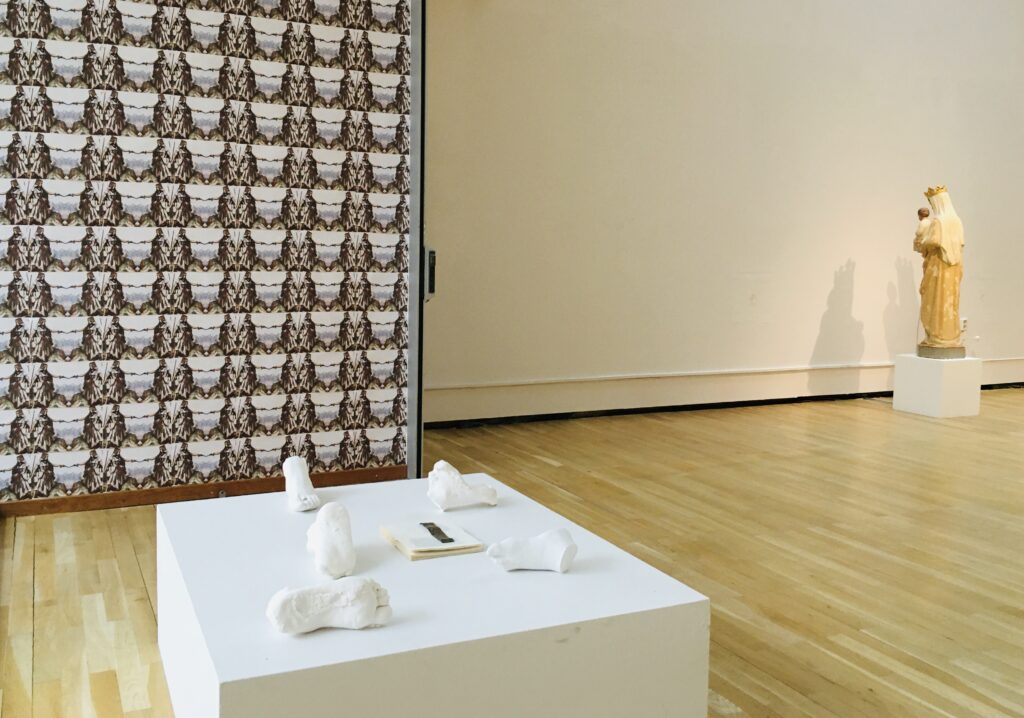
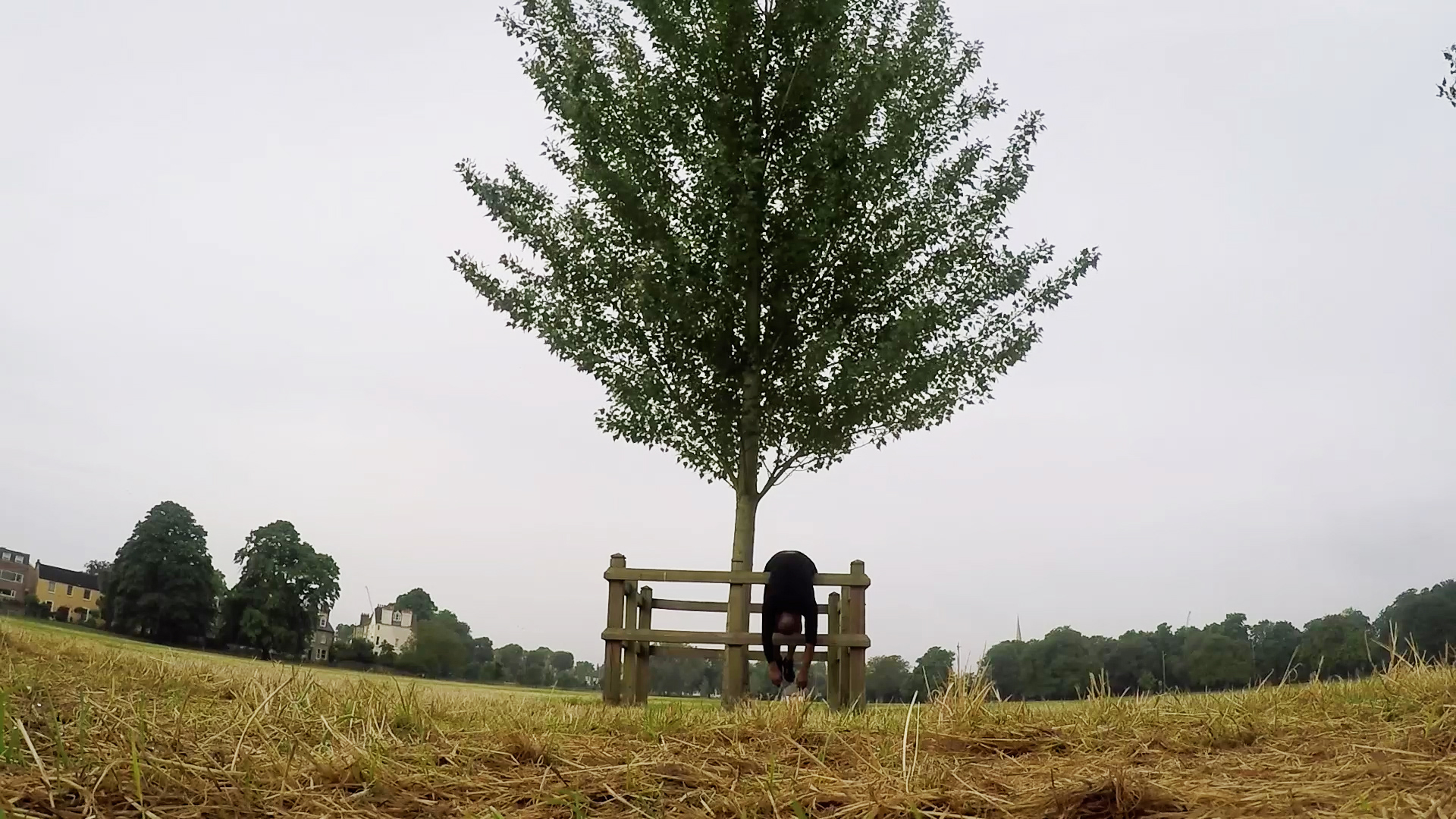

Participating artists:
Halida Boughriet, Cesar Schofield Cardoso, Djibril Drame, Victor Mutelekesha, Harold Offeh, Minnette Vari, Haythem Zakaria.
Curated by: Kisito Assangni.
Today’s technological advancement and interculturalism have completely transformed the philosophical interpretation of what is aesthetically pleasing or engaging, altered perspectives on culturalism as well as offer a wide range of media needed to express one’s ideas and thought processes. Subsequently, contemporary African artists derive impetus from these contemporary unlimited possibilities to invent multifaceted artistic formalisms.
Drawn from practices that are touched by video art and film, House of Reasoned Truths assembles works by African artists who consider community and social fabric, feminist histories, diasporic subjectivity, geopolitical and environmental forces, performativity, and power issues. Over the past three decades, video art has increasingly become an accepted genre of visual expression in the field of contemporary African art and as a veritable form of visual culture. Representing the current energy, vitality, and range of expression in Africa’s thriving arts scene, House of Reasoned Truths emphasizes societal discourses especially the challenges of modern existence and offers a new kind of gaze on narratives and spectacles of globalism.
As the artifactuality and history of contemporary African art continue to unfold, the selected artists exploring different techniques use a varied vocabulary to convey their ideas that reflect the social and political concerns of today’s cultural context. Referring to the American philosopher of art Arthur C. Danto, these artists use the socially constructed conventions of their own social world and produce work that speaks to such conventions and the tensions they cause. House of Reasoned Truths acts as a catalyst for an on-going process of open discussion and intellectual inquiry about Africa and the world today, beyond historically reductive classifications.
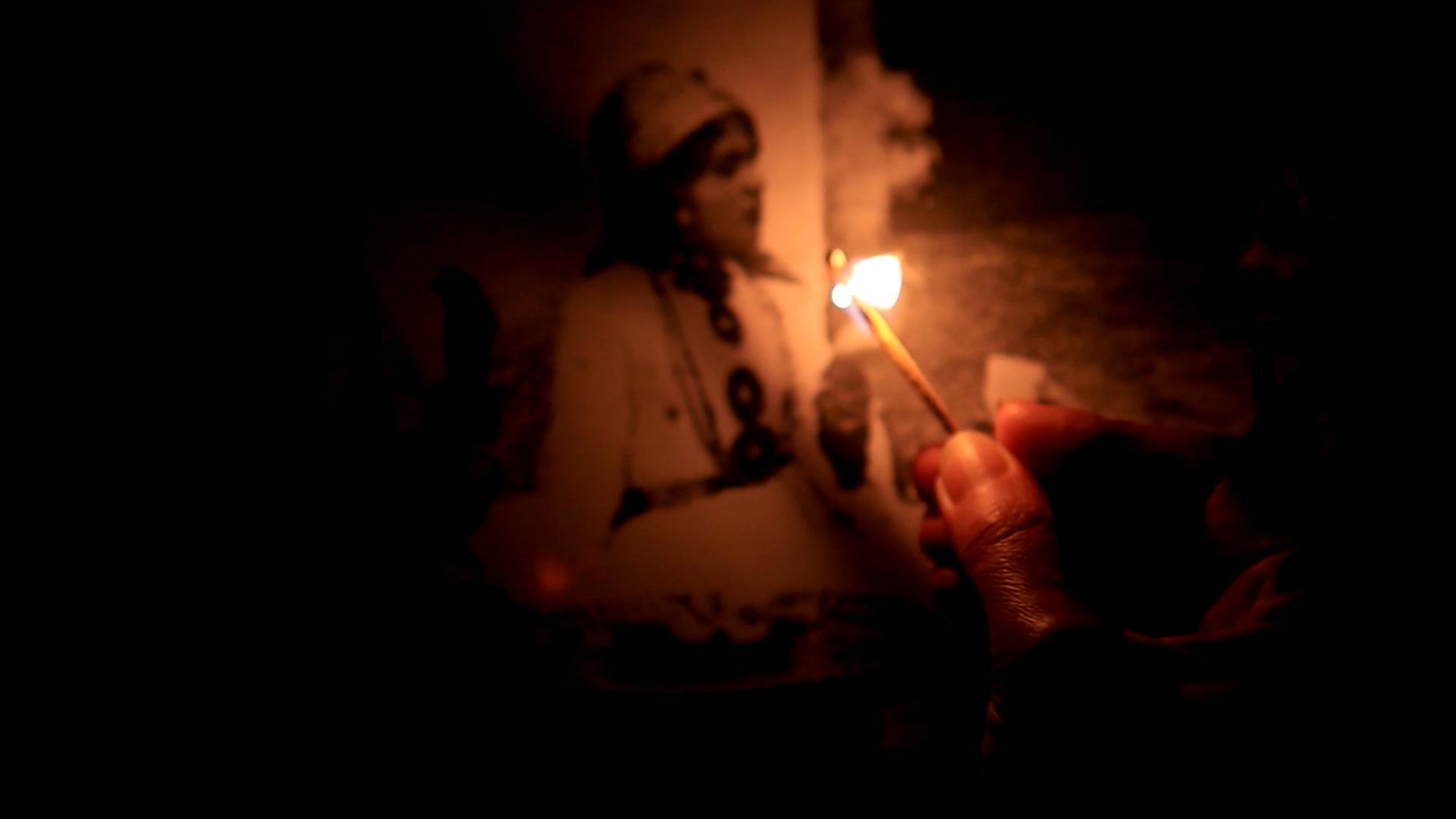
Halida Boughriet, Feuille d’or (Gold leaf), 2022, 06:41
Fire eats the wood, it moves fast, to Beethoven’s Kreutzer Sonata, dedicated to George Bridgetower. Sounds of crepitation and enlivening violin strings open the scene in darkness. The British Black virtuoso violinist, Bridgetower, performed the piece “sight-reading with Beethoven at the 1803 première”. The artist lights a match upon ancient faces – from Caravaggio to Valentin de Boulogne. A performance of a hand and a flame over an image. Together, hand and flame graze the image, as though about to set it alight. Black women, North African women, women as ‘Other’, women as forsaken, orientalized, enslaved, objectified. With her captivating voice, Halida Boughriet takes her viewer by the hand, reading poems by the Romantics – Baudelaire, de Vigny, Flaubert – whose crafted words entrap the Oriental muse, and unsettle a contemporary consciousness. Leopold Senghor’s verses offer an alternative voice, accompanying archival photographs of North African women in native dress and jewels, on whom so much patriarchal erotic desire and violence has been thrust. The colony, the empire, the archive, the vast collections of photographs of the disempowered on the web, searchable and up for purchase. Has much changed since they were taken? The rhythm of the voice questions and seduces, the flame, briefly revealing a brutal history, connects us to the sticky web of primitivism that saturates Western culture, without ever touching the image. We float through in the partial light, trying to remember and re-member a different history, still trapped in the shadows of this time, our time. A brief moment, too short, is conceded to try to understand the consequences of Western civilization, after which the match consumes itself, the flame withers and dies.
By: Martina Caruso, art historian.
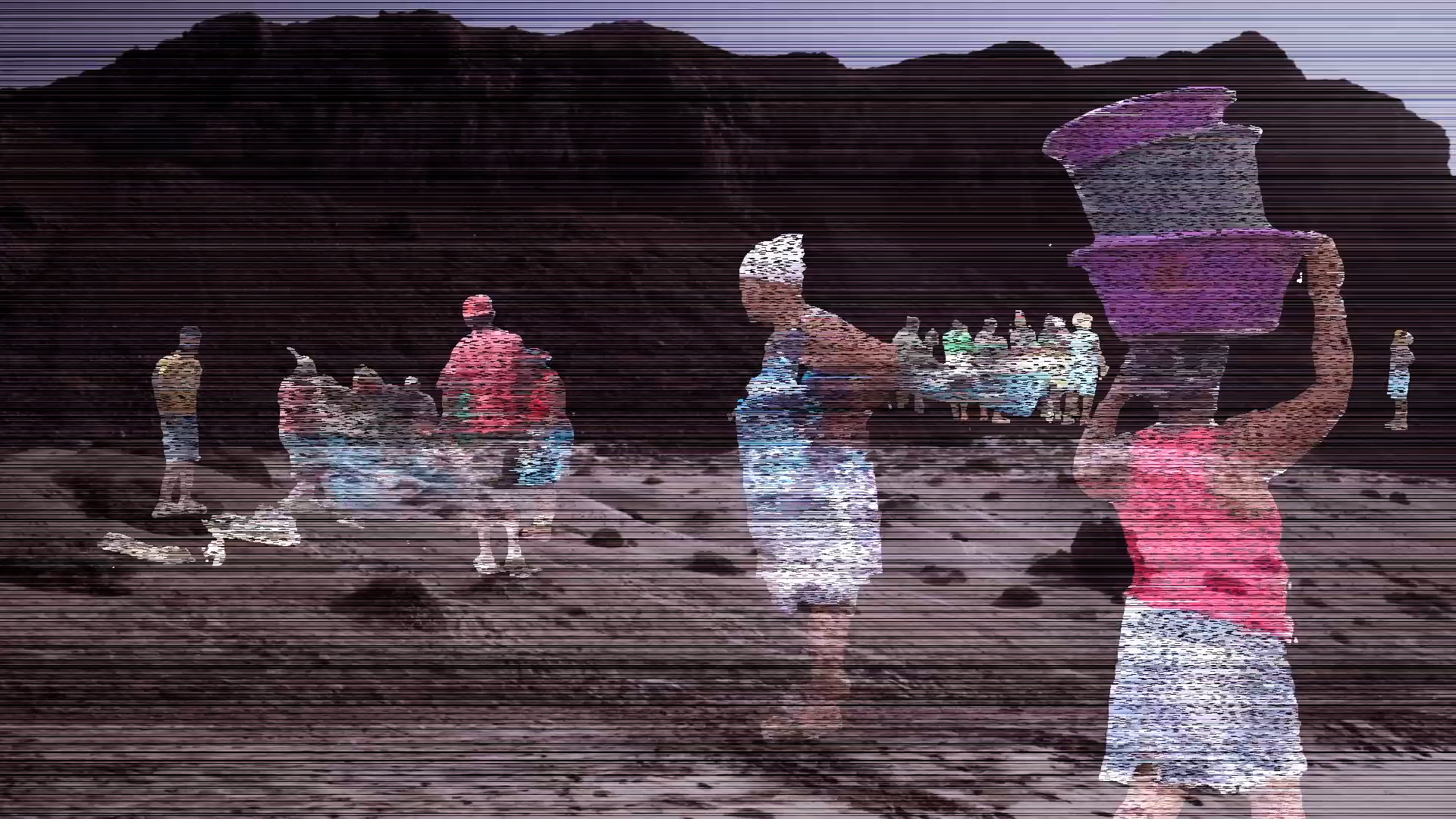
Cesar Schofield Cardoso, Blue Womb, 2023, 08:00
This work proposes a re-imagination of the contested sea as a site of creation and not only of violence and trauma. Cabo Verde endures a complex relationship with its surrounding ocean, officially fourteen times greater than its land territory. Centuries of slavery, a history of grueling labor practices on whaling ships, forced migration, to the present scarcity of fish due to foreign industrial overfishing, and climate change deny us access to our oceanic citizenship. As such, how could we re-imagine life with the ocean? Or stay with the trouble while reclaiming its immense creative reserve? This work explores two concepts by American philosopher and biologist, Donna Haraway: String Figures, a proposed merging of frameworks from science, myth, or storytelling; and Staying With The Trouble, which envisions a collaboration between humans and non-humans for a new relationship with the earth and its inhabitants in a time of great social and environmental crisis. The visual narrative of the work proposes an alliance of the ocean’s trash with its myriad living forms, mimicking symbiosis between living and non-living matter.
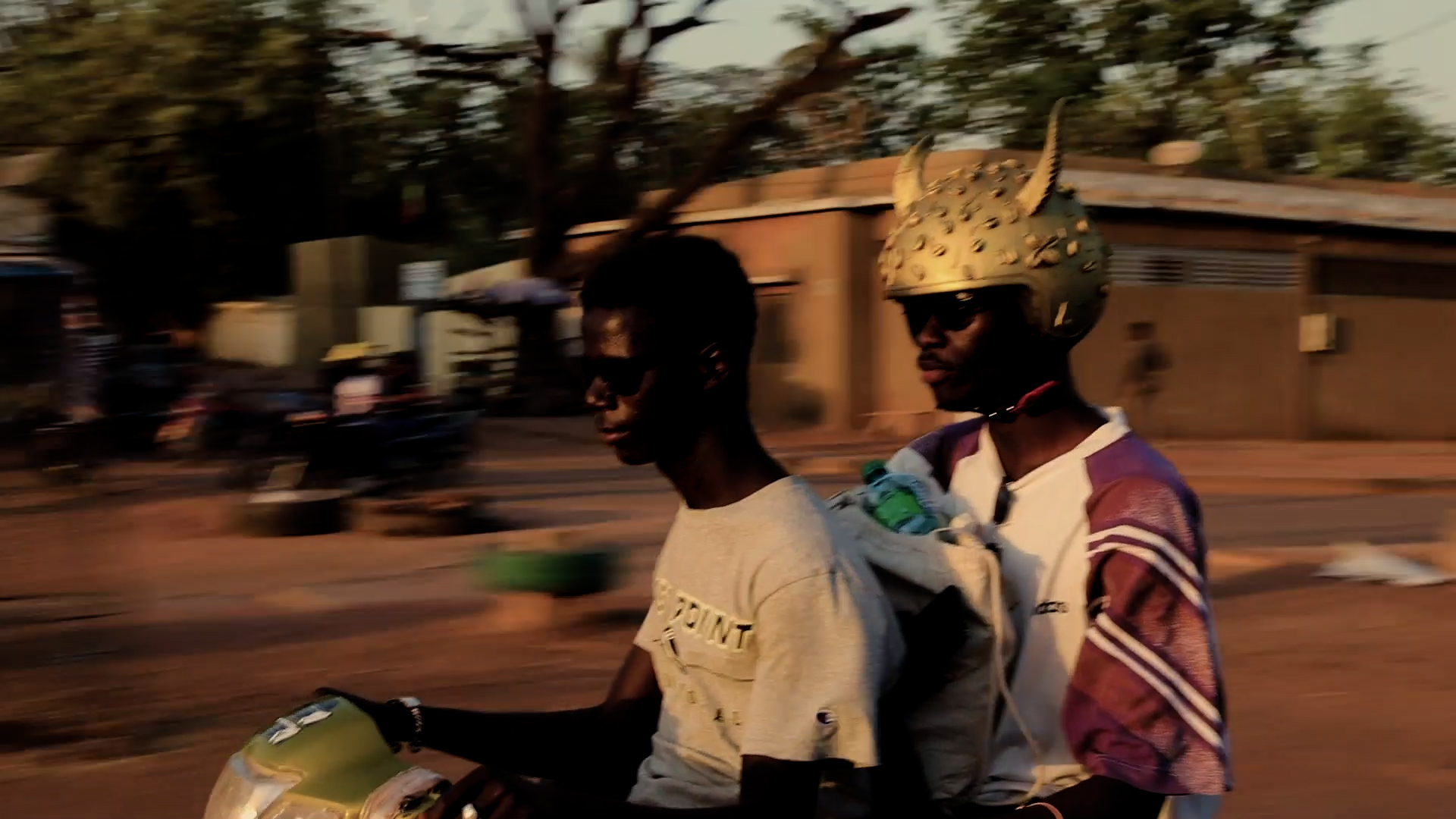
Djibril Drame, Sabadola Zombies, 2021, 06:35
The Senegalese artist and photographer Djibril Drame has a close relationship with the artistic subjects he approaches, analyzes and reproduces. In this film, Drame makes us discover Sabodala’s gold. Sabodala-Massawa mining area, a beautiful ocher colored place filled with life, misery, hope and resistance, is captured by Drame’s camera. A dream that Senegal will become a rich country. Sabodala Zombies ride their “Djakarta” motorcycles on the edge of the mining area which suddenly becomes a playground. They depict a dying dream, mixed with the nostalgia of the Africa that was populated by proud warriors on the vast savannas of the ancestors. The images in the film make us see a resistance to the evil that is also present in the place. A call to search for gold, even if all that glitters is not gold.
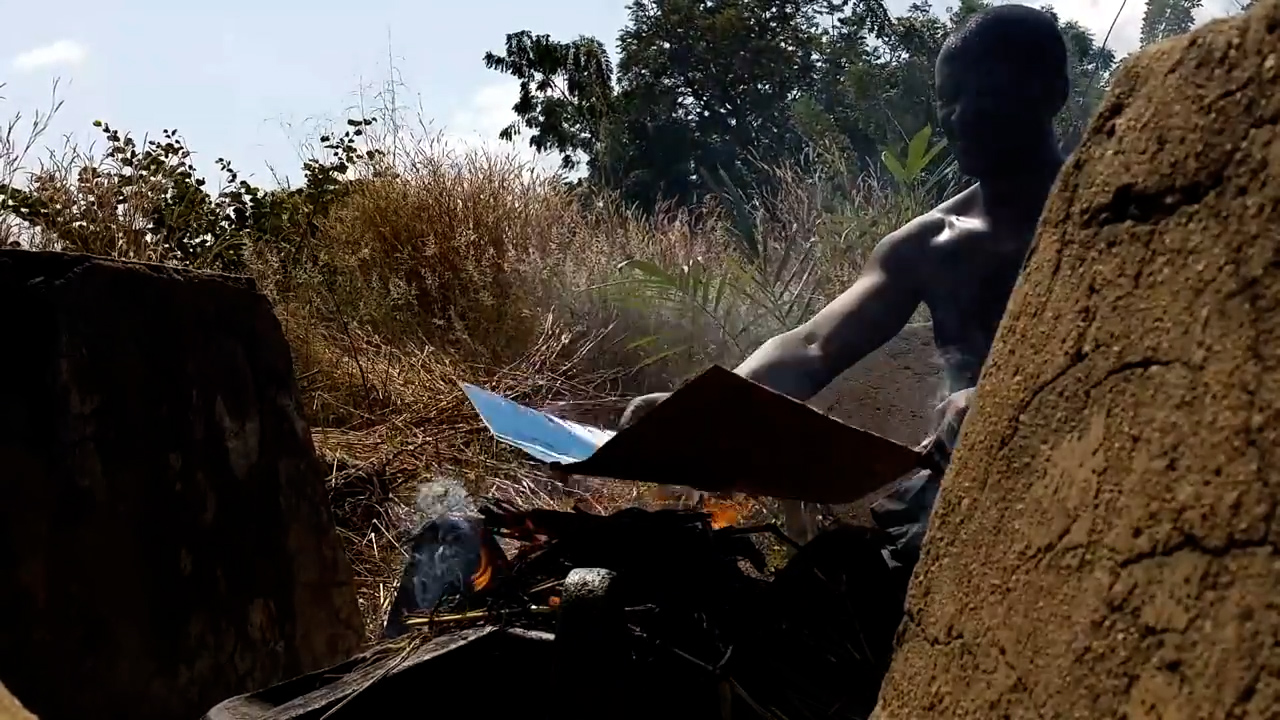
Victor Mutelekesha, The Center Still holds, 2017, 09:53
The point of departure for this project is Chinua Achebe’s novel titled “Things Fall Apart; the center can not hold” This fictional tale is set around the time colonization started to take root in bigger part of Africa. It is a vivid narration of the systematic decimation of society, its traditions, Arts, and cultures… In the essay Colonization and Identity, Chris Kortright writes, “Colonization is a technique used to subdue the native population… sacking of cultural patterns; these cultural values are stripped, crushed and emptied. In an attempt to control, reap economic benefits, and “civilize” the indigenous peoples the colonialist dismantles the native cultures by imposing their own.” By doing so, the very fibers of one heritage are rendered useless and hence dispensable to be replaced by another. Chinua Achebe succeeded beyond measure to paint the picture of how it all happened. At its peak, all seemed to have been lost. At least that’s the picture Achebe’s book depressingly paints. There has been no letting down even in post-colonial Africa, with persistent waves of power, religious and capital interests continue to pound African cost because somehow, somewhere, someone else feels an insatiable need to do so.
In “Things fall apart…” Achebe describes how the world around Okonkwo falls apart with the onset of colonization that decimates the Igbo culture and traditions, suddenly, evoking the ancestral spirit and possessing artifacts that embodies their spirits became overshadowed by Christianity and later Islam. The Center Still Holds is a video and sound montage mostly filmed in Togo, a former German colony. In the first clip, what used to be a German radio transmission tower is occupied. Symbolic smoke signals with vodoun (voodoo) is sent out as a constant soundtrack to the world, that seemed to have been lost but still flows through the veins of the descendants of the generations that encountered first hand colonization and slavery. Minutes through the video two sounds that represent Christianity and Islam, two religions considered by the artist to be part of mental colonial disorder kick in, then later a second video almost overshadows everything representing the resilience of vodoun (voodoo) of old amidst a society whose outward look seems like a lost cause but it’s Center still holds through those who carried on the traditions even when it was illegal or unpopular to do so.
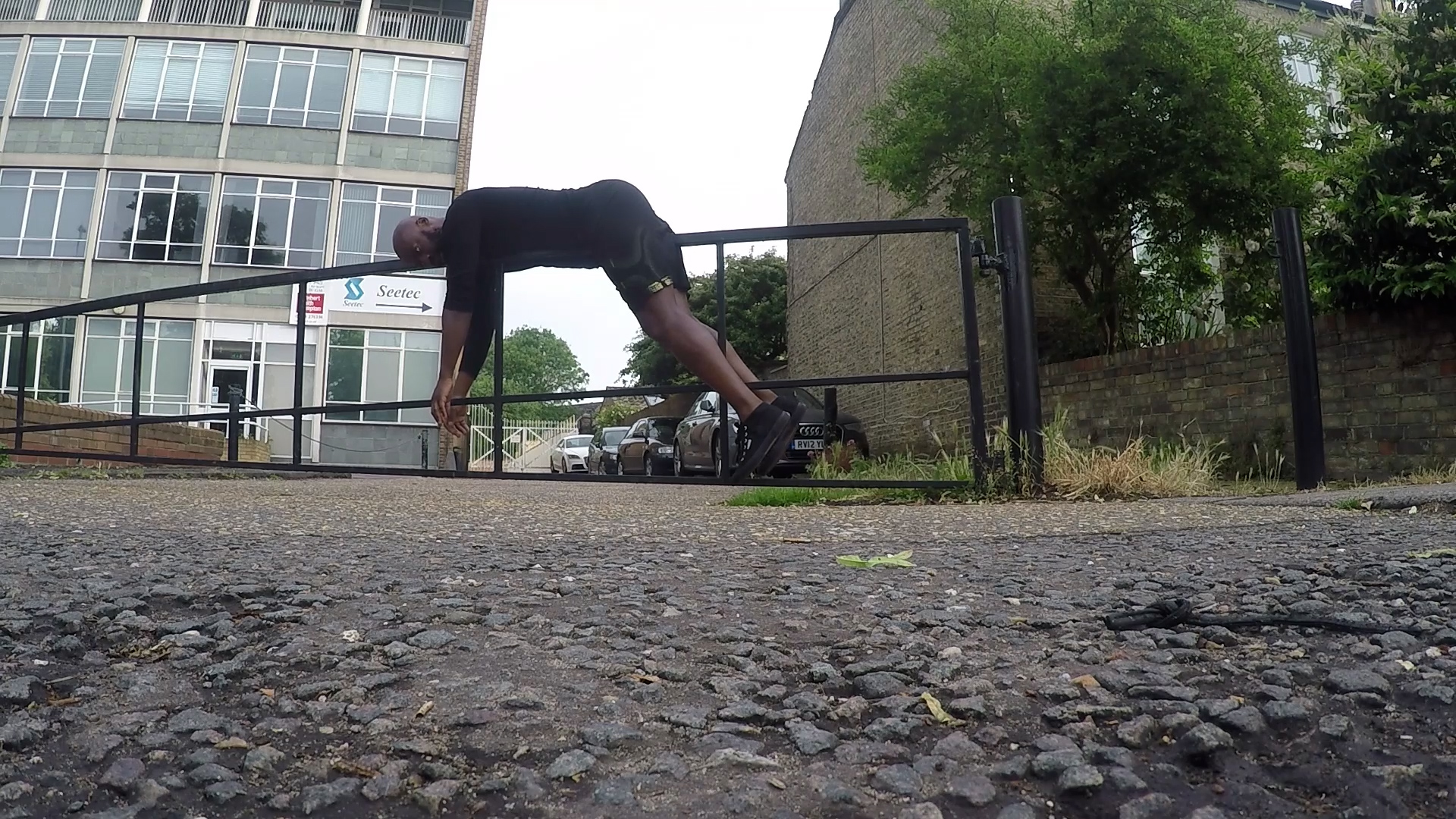
Harold Offeh, Two Positions, 2016, 07:00
Commissioned for Kunst Vardo TV ‘Two Positions’ is a performative response to a found image, a still taken from a performance of the Renga Moi*, a play by the Ugandan playwright Robert Serumaga. The piece sees Offeh re-perform 2 out of 3 positions in different locations in Cambridge, UK. The original image was taken from a catalogue of works presented at the 9th Festival of Arts Shiraz-Persepolis, Iran in 1975 that Offeh encountered at the Whitechapel Gallery in London. Initially unaware of the original narrative and context of the play, Offeh wanted to explore the potency of the images through this series of performed actions. The image from Serumaga’s performance provides a starting point for a playful and embodied response. Offeh’s body re-contextualises the positions from the original image as he places himself in relation to the architecture and landscape.
* Renga Moi was presented by the Ugandan Abafumi Company from Kampala, explored the links between authentic local theatre roots, religious ritual and court entertainment. The company used four languages (Luganda, Acholi, Rounyankole and Rounyarwanda) during the course of the performance, juxtaposed with non-verbal elements such as dancing, drumming and religious ritual. Royal Shakespeare Company, London, 31 March to 26 April 1975.
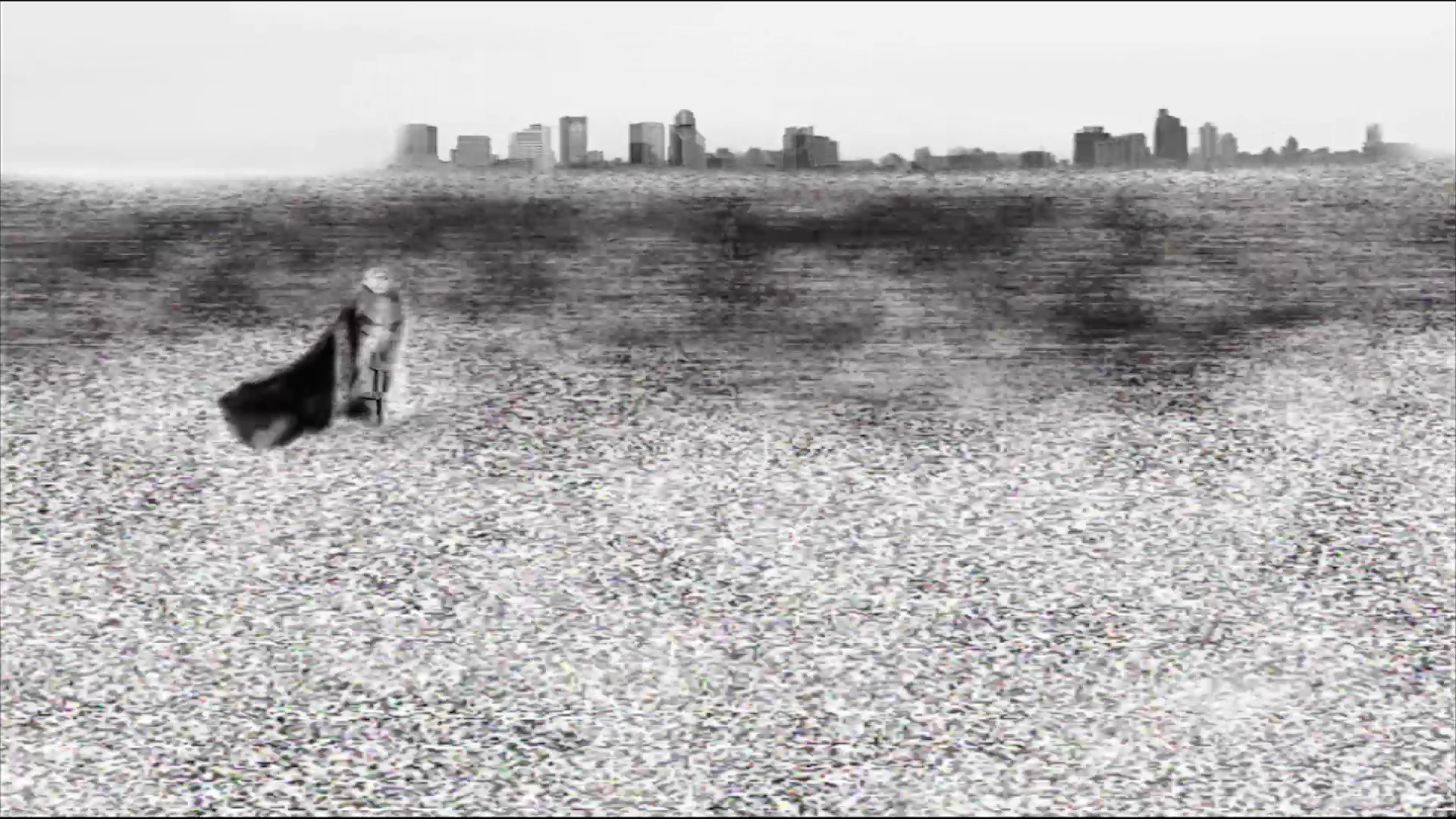
Minnette Vari, Quake, 2017, 06:23
Quake is a reflection on contemporary geopolitics, about the world existing in an apocalyptic mode. Besides the narratives of tumult handed on from ancient mythologies through to contemporary popular science fiction to the portrayals and posturing of global news, the artist wanted to retain the original sense of apocalypse as a ‘lifting of the veil’– a discourse of revelation. And for such a discourse to hold all the monumental contingencies of origination an decimation, it has to harbor some indefinable, incalculable excess – the potential to yield perilous spills of multiple, intersecting planes of meaning. In Quake, three elements feed into, and out of each other. The restless, autophagic architecture of the city on the horizon seems to produce, yet also to compose itself out of, the vast granular field of corrosive energy, which in turn yields the figures, growing from miniscule foetal bundles that bud in the distance at random intervals. These fugitive envoys proceed from so far in the background that when they finally do approach us as distinct entities, the sense of it is that they’ve always be there. So, they’re brand new and ancient at the same time, and they also seem, in their very rapid mutations, to carry some seed of what is happening behind them in that impossible metropolis that is simultaneously all cities and no city, and reads in a way as ‘allcivilization’. Likewise, in that they each manifest a flicker of different faces and bodies, figures seem with each passing frame of video to forget who they were before and assume a new identity, so they come to represent everyone and no-one at the same time – and in, that, all humanity.
The visual dynamics in Quake suggest that it is not possible to encompass the entire archive of human experience. As these cities rise and fall and the subterranean storms roil, the wandering figures leave the viewer behind, and we worry about what is forgotten. There’s that sense of longing in the work: that we are all nomads who can only grasp a handful of sand, with the knowledge and information that it contains, yet must accept that there can never be only one signal to this noise. It’s as though Quake, in evoking all moments at once and yet, in its seamless looping offers the very opposite of linear time, sits at the edge of a radical fissure in the very fabric of what can be known, remembered or experienced.
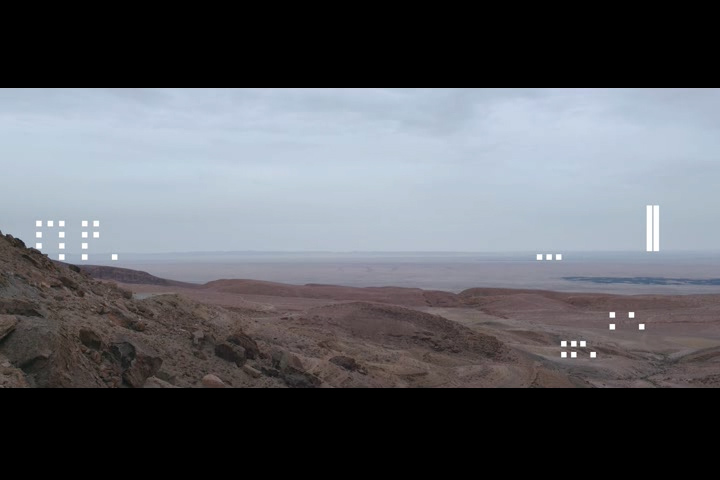
Haythem Zakaria, The Stone Opera, 2022, 15:00
How to look at the landscape and how to recount it? The Stone Opera attempts an answer in the continuity of the investigations of interstices. This plural work is composed at the same time as a musical piece, a visual experiment, and a sound documentary to totalize the genres, without, however, claiming to be exhaustive. Following a geopoetic approach, as Kenneth White understands it, the work welcomes the landscape, as much as it is welcomed by the latter, following a look that discovers, without desire of conquest, the surroundings of the town of Redeyef, starting from the top of its mountain massifs. The Stone Opera consists of three acts in which four people from Redeyef: Sakend and Taher, then Farouk, and Montassar – intervene as troubadours telling stories about the mountain, the myths of the region, and the treasure seekers. The testimonies, grafted onto the images of the landscape, function as temporal and auditory markers which, in the background, historicize the work and territorialize it; and from one story to another, we move from the immemorial history of nature to the present day.
Text by: Fatma Belhedi.
Video made following the invitation of Siwa Platform for a collaboration within the framework of Documenta 15. (Kassel 2022)